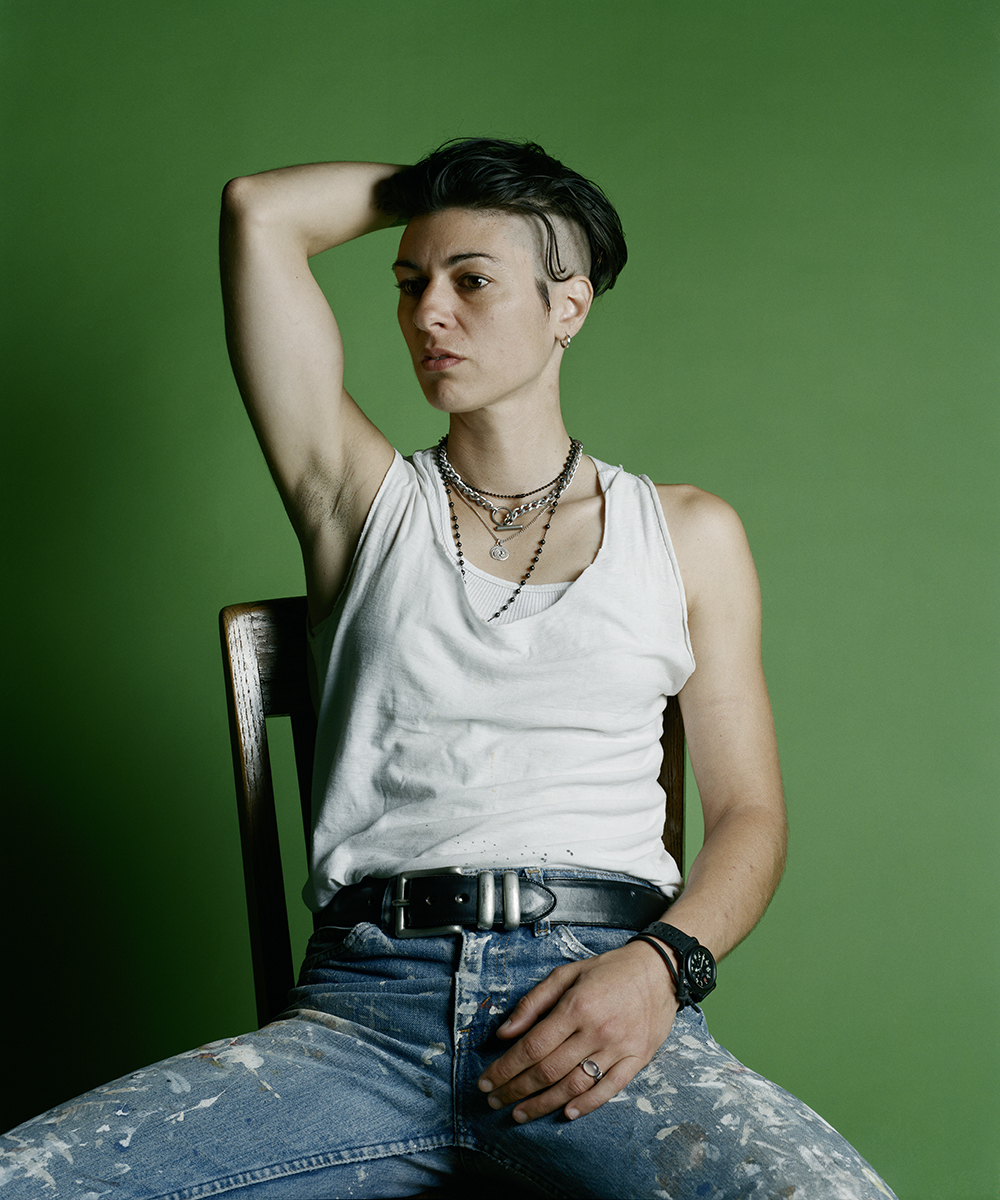Art Theory Week 3 Semester 3
Catherine Opie
"My biggest concern is equality for women artists and affordable housing: the practicality of making a living and being a practicing artist is daunting. Perseverance, my fellow artists! And be authentic with your practice.
In a world in which political upheaval seems to be at every turn, I think one of the larger questions is: what type of artist do I want to be? There is no right or wrong answer; it is important to know that the artist’s voice and work can span a larger discourse in relationship to contemporary culture, politics and practice."
Kim Yong-ik
 Kim Yong-Ik is a korean artist who has spent over 40-years of his career as an artist, writer, and curator, resisting categorical affiliation with dominant art movements in Korea, from the monochromatic and minimalist paintings associated with Dansaekhwa, to the sociopolitically concerned Minjung or 'people's art' in the 1980s. Declining an offer to align with the latter group in 1985, Kim committed himself to challenging the principles of modernism and the avantgarde by embracing an 'anti-art' aesthetic and concealing his political gestures in subtlety. In the article Yong-ik disscusses his fear of the "surplus", over consumption and mass procution of the visual image whin Yong-Ik believes is a threat to to traditional artists. In Yong Ik's Plane Object series (1970) he demonstrates this philosophy, during the creation of this exhibition he was reading about the japanese movement Mono-ha movement and read one of the artistic statements, which essentially said, 'leave things as they are'. Yung-Ik states in an interview What I had previously learned was that art was either abstract or figurative—it was about representation and the involvement of the artist, basically. But Mono-ha taught me that things could be just as they are. You don't need the artist's intervention. That really struck me. I think the concept itself was not entirely foreign to me, because I was exposed to the philosophy of Lao Tzu early on, which was all about leaving nature as it is.
Kim Yong-Ik is a korean artist who has spent over 40-years of his career as an artist, writer, and curator, resisting categorical affiliation with dominant art movements in Korea, from the monochromatic and minimalist paintings associated with Dansaekhwa, to the sociopolitically concerned Minjung or 'people's art' in the 1980s. Declining an offer to align with the latter group in 1985, Kim committed himself to challenging the principles of modernism and the avantgarde by embracing an 'anti-art' aesthetic and concealing his political gestures in subtlety. In the article Yong-ik disscusses his fear of the "surplus", over consumption and mass procution of the visual image whin Yong-Ik believes is a threat to to traditional artists. In Yong Ik's Plane Object series (1970) he demonstrates this philosophy, during the creation of this exhibition he was reading about the japanese movement Mono-ha movement and read one of the artistic statements, which essentially said, 'leave things as they are'. Yung-Ik states in an interview What I had previously learned was that art was either abstract or figurative—it was about representation and the involvement of the artist, basically. But Mono-ha taught me that things could be just as they are. You don't need the artist's intervention. That really struck me. I think the concept itself was not entirely foreign to me, because I was exposed to the philosophy of Lao Tzu early on, which was all about leaving nature as it is.https://ocula.com/magazine/conversations/kim-yong-ik/
Oreet Ashery
https://frieze.com/article/oreet-ashery
Touria El Glaoui



Comments
Post a Comment